Klipsch The Three (with Google Assistant) review
A smart speaker with a heritage design
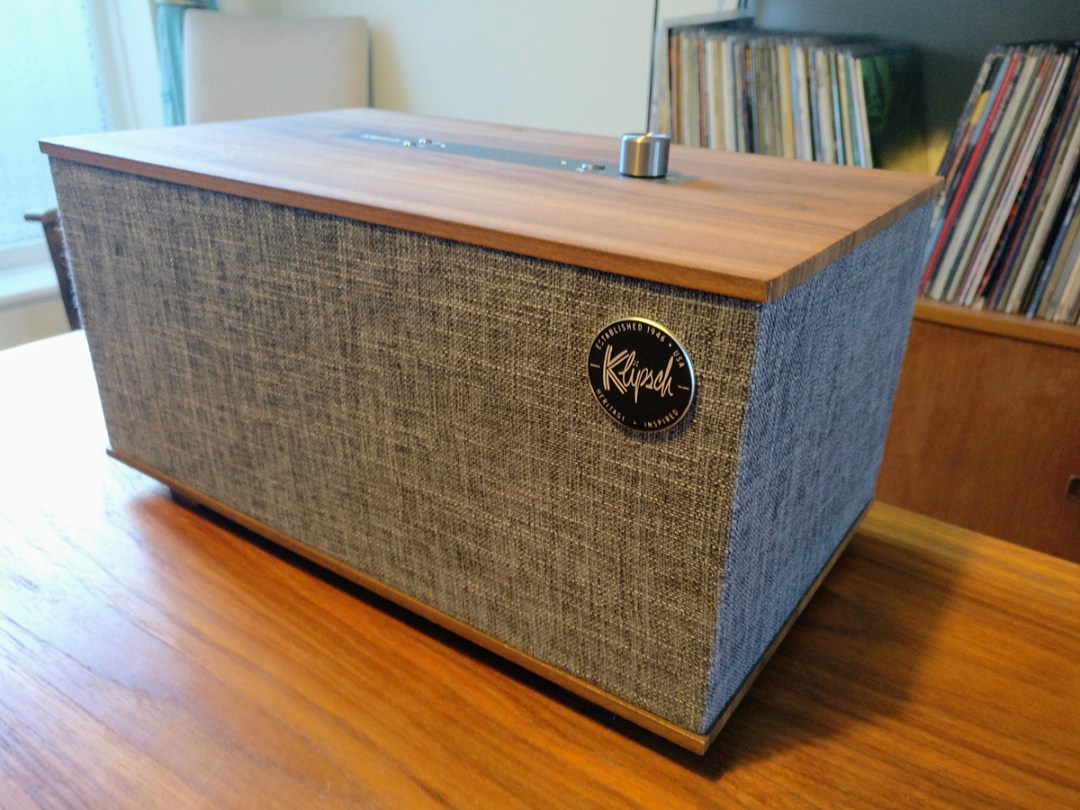
Wireless speakers with a voice assistant element are now as commonplace as baked beans in greasy spoons.
And the growth in their popularity has pretty much mirrored the initial growth in the wireless speaker market when that first became ‘A Thing’.
It’s built around entry-level, properly affordable stuff and high-end, aspirational, design-led and expensive gear. The middle ground – call it £350 to £600 – is, by contrast, a bit lonely.
Klipsch sees that void and wants to fill it – with this, a voice-powered speaker called The Three with Google Assistant.
And if someone’s going to hold the centre of the market, Klipsch has just a strong a claim as anyone else.
The American specialist is a 70 years-plus veteran of the loudspeaker industry and a legend of American cinema systems – so why shouldn’t Klipsch (and its rather awkwardly named The Three with Google Assistant) own a slice of the midrange ‘voice assistant speaker with multi-room capability’ market?
Design and build: a sprinkle of salt’n’pepper
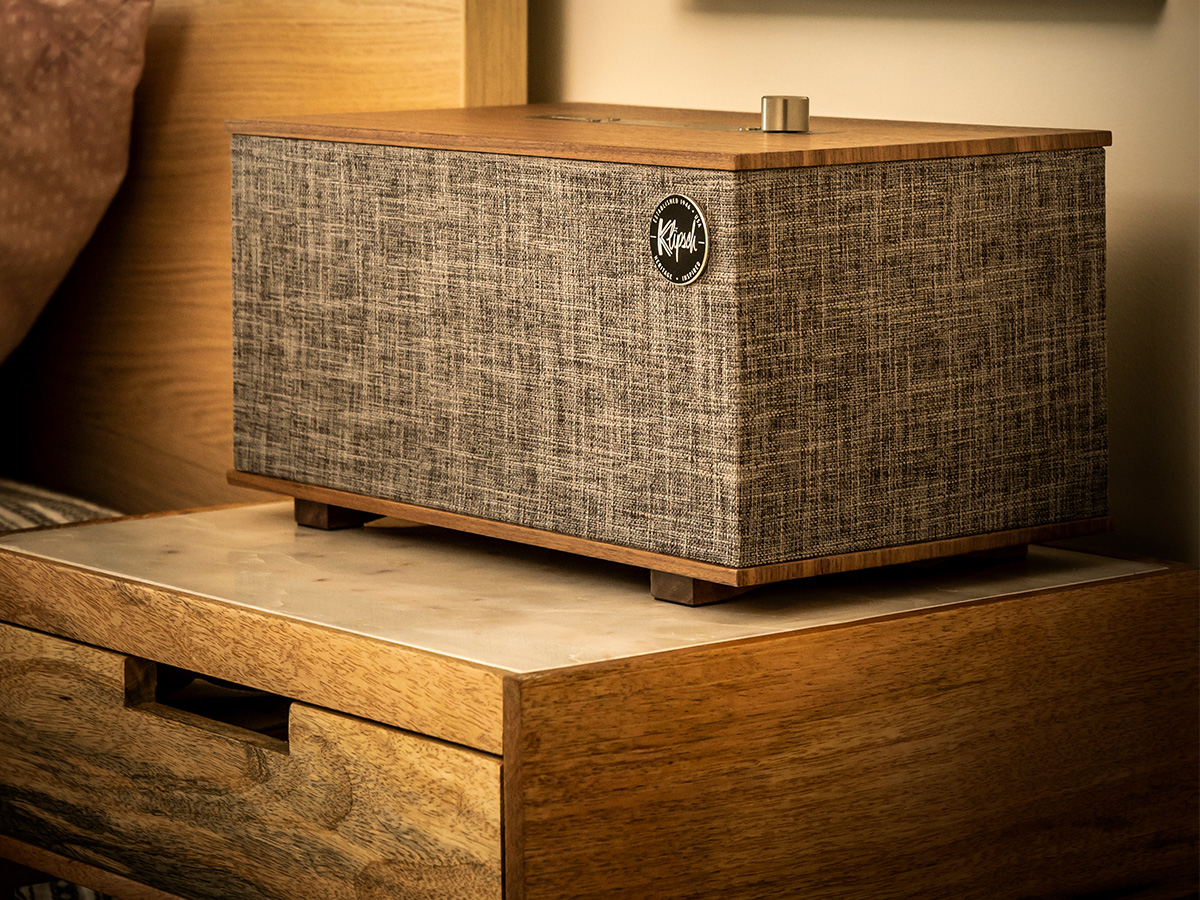
As part of Klipsch’s ‘Heritage’ series, The Three with Google Assistant (or ‘The Three’ as we’ll be calling it from here on out) is rocking the ‘mid-century modern’ look that’s currently so beloved of interior decorators the world over.
This manifests itself as a fairly significant box (18 x 35 x 20cm) finished with wood veneer on the top and bottom, separated by salt’n’pepper acoustic cloth.
The physical controls on the top of the box are of nicely tactile metal, and to finish there’s a bit of branding in the top-right corner that’s straight from the ‘post-War futurism’ school of typefaces. There’s not a curve, nor a soft angle, in sight.
Nothing about the way The Three is constructed gives any cause for alarm. It feels sturdy on its little feet – it’s a chunky 4.7kg – and the controls all feel well-engineered.
Overall build quality is as impressive as it should be in a product costing this sort of money.
Cat-owners will be nervous about how temptingly grippy that acoustic cloth is – but then cat-owners generally live in fear of the ruination of anything nice they’ve bought, so shouldn’t let it put them off.
Features: The big three
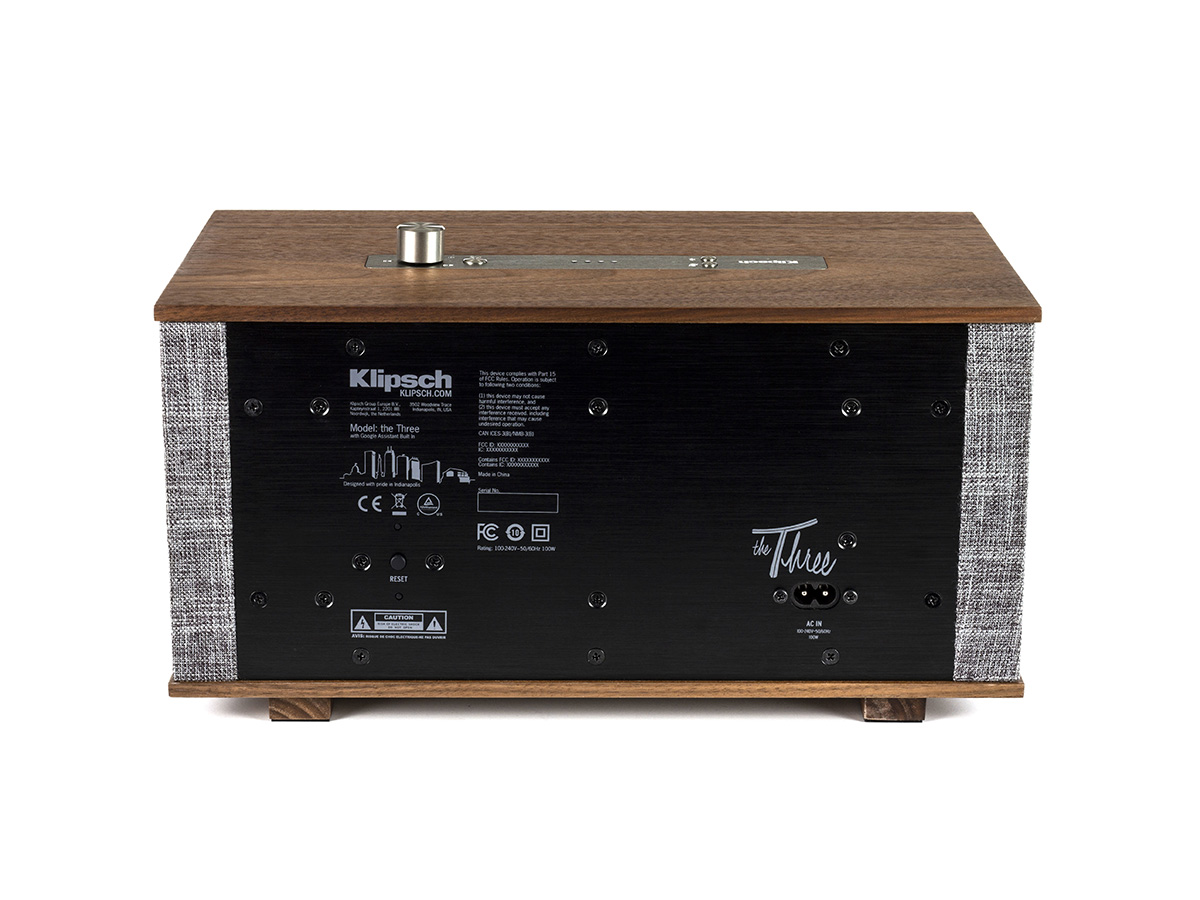
Inside the square-edged box there’s 60 watts of Class D amplification, driving two 57mm full-range drivers and 133mm subwoofer.
Low frequencies are further bolstered by a pair of opposed passive radiators of similar size – so, on paper at least, the Klipsch shouldn’t struggle to deliver worthwhile low-end presence.
The are no physical inputs on this version of The Three – your sources are Bluetooth (the original Three uses aptX and Bluetooth 4.0, and there seem to have been no changes here), Chromecast (which is built-in) and, of course, your voice. Which in theory should be enough to keep you in entertainment (music, podcasts, whatever) for the foreseeable.
The Three is able to deal with digital information up to a 24bit/192kHz file size – but must downscale anything above 24bit/96kHz to fit Chromecast’s upper limit.
Interface: Voice or dial
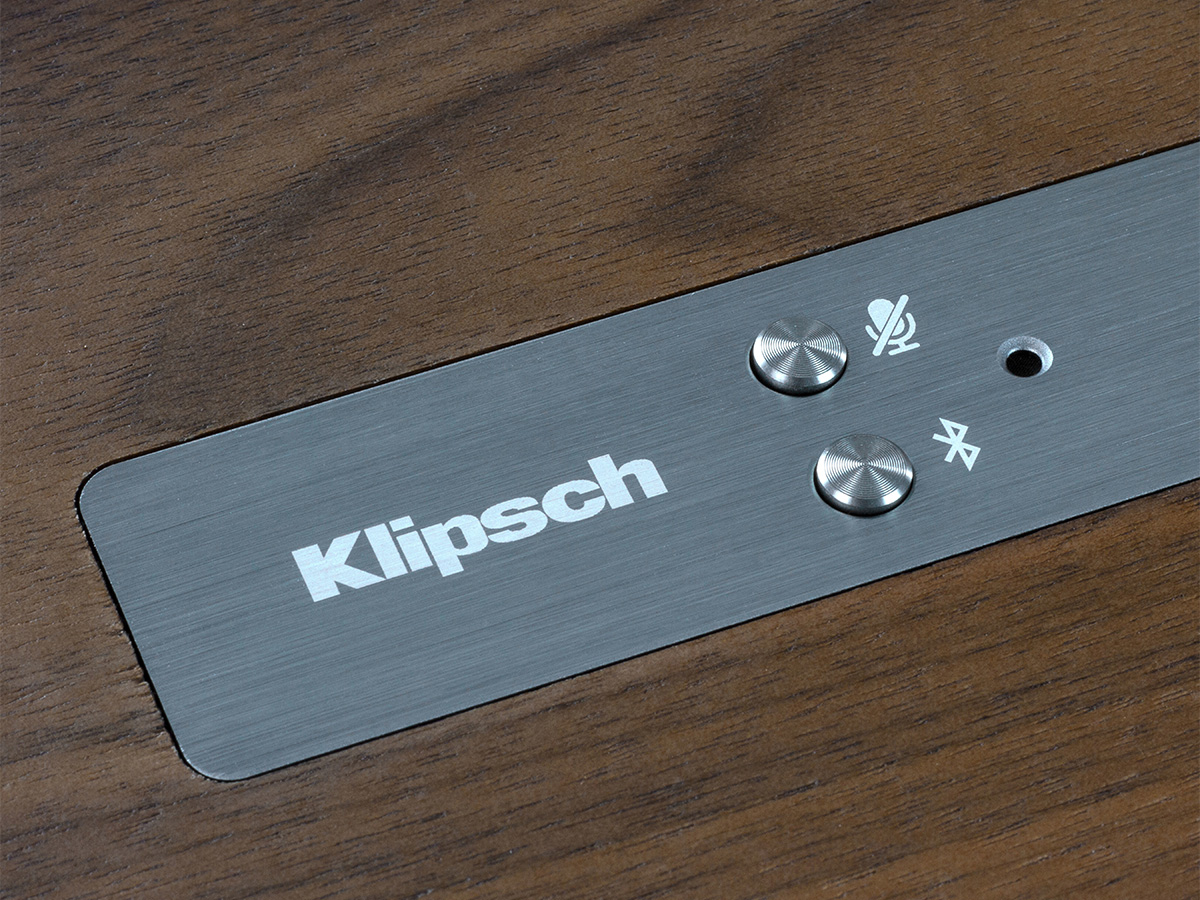
Manual controls consist of a volume dial (which also doubles as a push/push play/pause control), a Bluetooth pairing button, a mic mute control and a Google Assistant button (which is very much the Batphone of any self-respecting voice-control speaker).
But, of course, no one in their right mind gets hung up on button-pressing when the entire operation can be controlled by voice.
Setting up The Three using the Google Home app is simple, and once you’ve done so a world of Smart Home control opens up.
The usual Google Assistant-equipped products (lights, thermostats, speakers etc and so on) can all be administered via voice control, and Google Assistant speakers are easily arranged into a multi-room system.
The Three’s voice recognition is generally reliable, but our time with it did expose some small issues.
An attempt to be high-brow by requesting some Harry Partch repeatedly resulted in The Three cueing up one of the Harry Potter soundtracks instead – and as for expecting The Three to cope with a request for Stereolab’s The Groop Played Space Age Batchelor Pad Music, well, you can forget it.
These aren’t huge shortcomings in and of themselves, but it’s worth noting an ostensible rival like Marshall’s Stanmore II Voice has far less trouble understanding our wants.
Performance: mixed bag
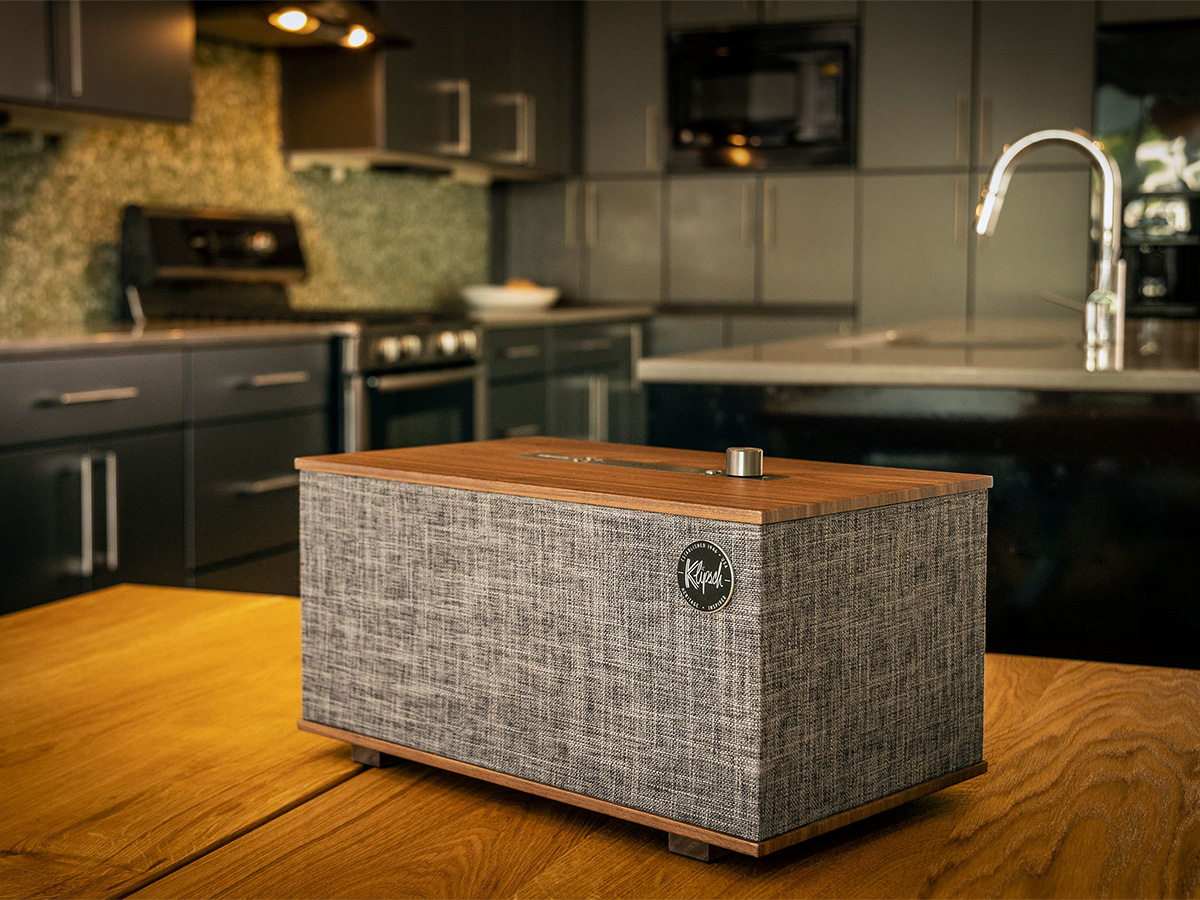
But once you’ve made the The Three understand exactly what it is you’d like to hear, there’s plenty to like about the sound it makes.
Finally up and running with the aforementioned Stereolab, the Klipsch has all sorts of observations to make about the fine details of the recording.
There’s real grip and texture to the low frequencies, a real sense of fingertip-on-guitar-string rather than just a bass sound.
Switch to Handsworth Revolution by Steel Pulse (far easier for Google to understand) and that low-end fidelity comes even more strongly to the fore – and this tune makes the crisp attack at the opposite end of the frequency range obvious too.
This kind of treble bite isn’t a given from full-range drivers charged with dealing with everything but the lowest frequencies, but The Three has commendable high-end extension.
The same recording exposes The Three’s slightly off way with timing and integration, though.
The inverted off-beat skank that’s the very definition of reggae needs to flow along with head-nodding ease, but via the Klipsch the musicians of Steel Pulse sound just a little lumpy and estranged from each other.
The Three certainly isn’t the first wireless speaker to be exposed by a tune like this, but in our experience it might be the priciest.
Play more to its strengths with Feist’s Limit to Your Love and the Klipsch is a sight more confident. It does fine work with vocals, giving a singer full expression thanks to the detail it extracts. And the same strengths of texture and timbre come strongly to the fore.
Fundamentally, The Three sounds like a big, burly good-time sort of speaker that’s been encouraged to display a bit more finesse and decorum than it really wants to.
In most ways it makes a very decent stab at the brief, but its rather inelegant approach to integrating and organising the different elements of a recording makes it just that bit less than satisfying.
Klipsch The Three with Google Assistant Verdict
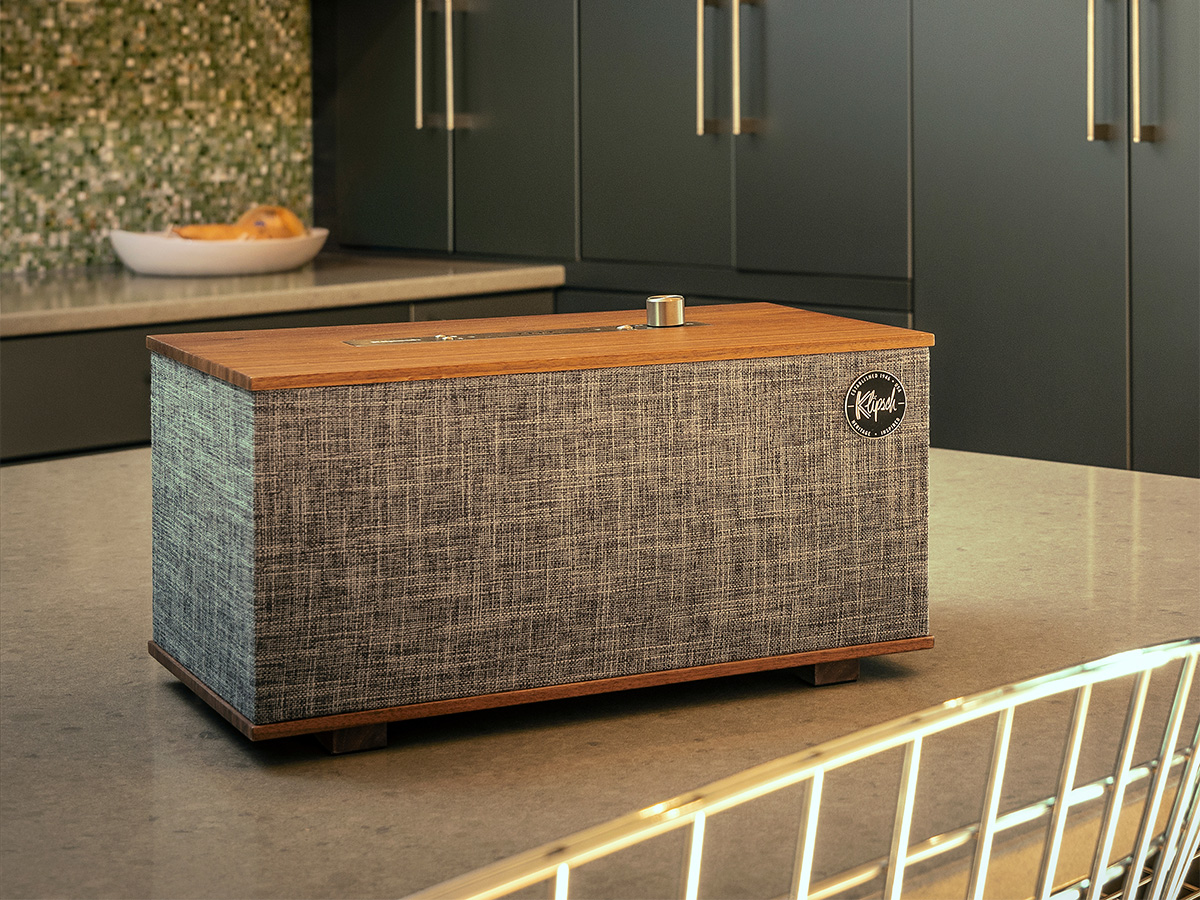
Stuff Says…
The Three is worth more than three stars, but it’s not quite accomplished enough to make the full five
Good Stuff
Great build quality
Decent sound quality
Retro design
Bad Stuff
Voice recognition can be hit or miss
Pricey
Sound lacks the same finesse of rival speakers



